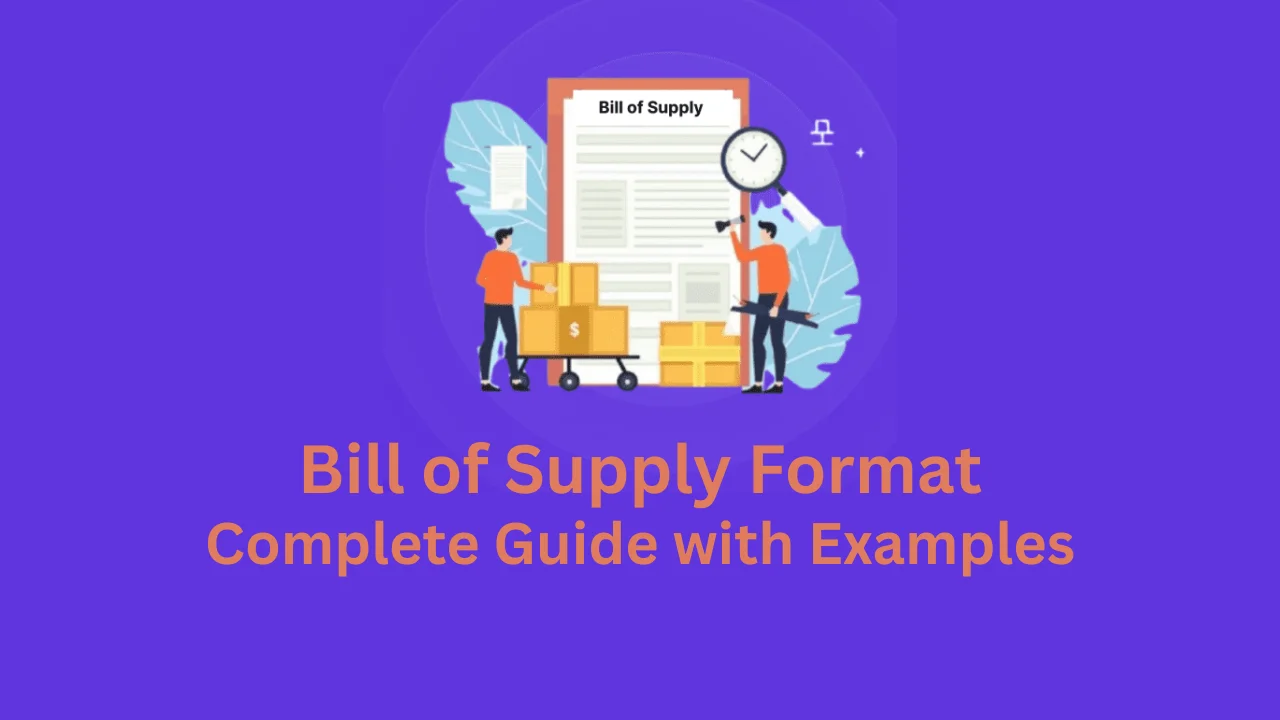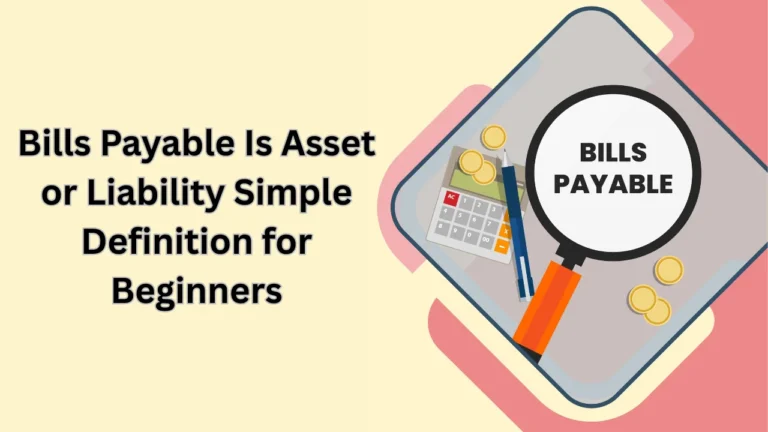When businesses operate under GST laws, not every invoice needs to include tax details. Some transactions need a Bill of Supply, which is a simple document used in place of a tax invoice. Many small traders, service providers, and composition scheme taxpayers rely on it. Understanding the bill of supply format is vital for compliance, smooth transactions, and accurate record-keeping. Just like knowing the fincare small finance bank balance check number helps customers track finances easily, having clarity on this document ensures that businesses avoid penalties.
What is a Bill of Supply?
A Bill of Supply is a type of business document issued by suppliers who are not allowed to charge tax. Unlike a tax invoice, this bill does not contain GST or VAT details. It is mostly used by composition dealers, exporters supplying exempt goods, or when making sales where tax is not applicable. The bill of supply format ensures businesses provide essential details without including any tax components.
Why Bill of Supply is Needed
Businesses cannot always issue tax invoices. If goods or services are exempt or fall under special rules, a Bill of Supply becomes mandatory. It maintains transparency in business dealings. For example, if a trader supplies exempt items like fresh milk or certain educational services, they must use this bill. Knowing the bill of supply format allows businesses to stay compliant and build trust with customers.
Difference Between Invoice and Bill of Supply
Many business owners confuse invoices with a Bill of Supply. The table below shows the differences clearly.
| Feature | Invoice | Bill of Supply |
|---|---|---|
| Tax details | Shows tax rates like GST or VAT | Does not show tax details |
| Use cases | Normal taxable supplies | Exempt supplies or composition dealers |
| Document title | “Tax Invoice” | “Bill of Supply” |
| Requirement | Mandatory for taxable sales | Mandatory for exempt or composition sales |
From this comparison, we can see that the bill of supply format focuses only on basic supply details without adding tax amounts.
Essential Details in a Bill of Supply Format
The government provides rules about what details must appear in this bill. The correct bill of supply format includes:
| Section | Details Required |
|---|---|
| Header | Title “Bill of Supply” |
| Supplier details | Name, address, GSTIN |
| Recipient details | Name, address, GSTIN if registered |
| Document details | Serial number, date, place of supply |
| Description | Goods or services, HSN or SAC code |
| Quantity and value | Units, rate per unit, total value |
| Declaration | “Tax not payable under GST law” |
| Signature | Authorized signatory or seal |
Including these fields ensures that the bill is valid under GST regulations. Without them, the document may be rejected during audits.
Legal Importance of a Proper Format
A Bill of Supply is legally recognized under GST laws. If businesses issue incorrect documents, they may face penalties. Having the right bill of supply format protects both the supplier and customer. For instance, if an officer checks records, they can verify details quickly. Just like drivers use nhai fastag balance check to confirm their toll wallet, businesses rely on these bills to confirm accurate supply records.
When to Use a Bill of Supply
Several business situations require this document. Common examples include:
When a registered person sells exempt goods and exporters supply goods outside the country.
When a taxpayer is registered under the composition scheme.
In each case, tax is not charged, so a tax invoice is not appropriate. Instead, the bill of supply format becomes the right choice.
Structure of a Bill of Supply
The structure of a bill is simple and easy to prepare. The following example shows a sample structure:
| Particulars | Example Entry |
|---|---|
| Title | Bill of Supply |
| Bill Number | BOS/2025/001 |
| Date | 29-09-2025 |
| Supplier Name | ABC Traders |
| Supplier Address | 123 Market Road, Delhi |
| Supplier GSTIN | 07ABCDE1234F1Z2 |
| Buyer Name | XYZ Enterprises |
| Buyer Address | 45 Industrial Area, Delhi |
| Description | Exempt supply of books |
| Quantity | 100 units |
| Value | ₹50,000 |
| Declaration | Tax not payable under GST |
| Signature | Authorized Signatory |
This structure ensures compliance and maintains professional standards in documentation.
Benefits of a Correct Bill of Supply
Using the right bill of supply format benefits businesses in many ways. It provides clarity between buyers and sellers. Customers know the transaction does not involve tax. Businesses avoid confusion with invoices and maintain clean records. It also helps in audits where officials demand accurate documents. Over time, following proper formats builds business credibility.
Common Mistakes to Avoid
Businesses sometimes make errors while preparing this bill. Missing mandatory details, using the wrong title, or including tax figures are common mistakes. These mistakes can lead to rejection of records. It is important to stick to the official bill of supply format. Simple mistakes can cause fines, so regular checks of documents are recommended.
Digital Bills of Supply
With technology advancing, businesses now generate bills digitally. Software like Tally, Zoho, or QuickBooks allow easy generation. A digital bill of supply format is convenient, reduces manual work, and avoids errors. It also helps in storage and retrieval during compliance checks. Digital bills can also be shared with customers instantly via email or WhatsApp.
Bill of Supply vs Delivery Challan
Some people confuse a Bill of Supply with a delivery challan. A delivery challan is only used for the movement of goods, not for sales records. A Bill of Supply records the value of goods or services supplied. Both documents are different and have unique purposes. The bill of supply format includes buyer and seller details, while a delivery challan mainly confirms goods in transit.
Future of Bill of Supply
As GST systems continue to evolve, digital bills will become the norm. Governments encourage businesses to use e-invoicing for tax invoices, and a similar trend may follow for Bills of Supply. The bill of supply format may soon integrate directly with government portals for smooth compliance. This will make processes easier for small businesses and reduce paperwork.
Conclusion
A Bill of Supply is an essential business document under GST law. It is required when tax is not charged on sales. Businesses must follow the prescribed bill of supply format to remain compliant. The format includes important details like supplier and buyer information, supply description, and declaration of tax exemption. Avoiding mistakes and adopting digital solutions ensures accuracy and saves time. Just like tracking bank balances or checking FASTag wallets, using the right format keeps business records accurate and reliable. Every small trader, exporter, or service provider should master this format to ensure legal and professional transactions.




